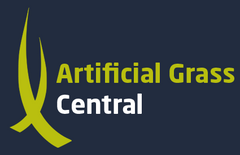What is "Padel" - A guide to Padel Tennis
What is "Padel", the new racquet sport taking the UK by storm. Padel, short for Padel Tennis is a growing sport that seems to be popping up everywhere, and everyone seems to be obsessed with it. You may be thinking to yourself "isn't it just an easier version of tennis?". This is like saying table Tennis is easier than Tennis. They are both different sports. In some ways it's easier than Tennis, but it's completely different.
Padel has its own rules and its own strategies that make it a separate sport with its own challenges. In this post we will go over the differences comparing Padel to Tennis along with some of the core rules so you can show up and give it a go yourself.
We aren't a Padel company, so why are we talking about this. Well, Padel is played on an artificial surface for the most part, and we provide companies with the Padel turf to create the courts you love to play on.
Padel and Tennis - The differences and similarities
Padel is quite different to tennis as much as it is a racquet sport, there are many differences between the two games.
Padel is played on a court a lot smaller than regular Tennis, a standard court being 10m x 20m. The court is a contained area usually surrounded by toughened glass and steel fencing that can be utilised when playing to add a new element to racquet sports. Additionally, the surround can only be used once the ball has bounced.
Courts is also set to one configuration. Commonly played in doubles, singles is also playable, but the course and boundaries stay the same. Whereas in Tennis, there are differences within the bounds when you play singles or doubles.
The ball in Padel is less pressurized compared to a regular Tennis ball. This makes the ball bounce far less and reduces the speed of a bounce, making the ball a bit easier to play after it's bounce. Additionally, a serve cannon be done overhand and has to be under hand, in Tennis you can do either over or underhand for the serve.
In Padel the racquet is also comprised of a solid plastic Padel with holes to help it glide through the air.
Comparing it to regular Tennis, Padel is a lot less intense of a game. It of course can be played at a quick pace. This allows for all ages and abilities to play. Padel is especially good for getting the elderly to have some exercise and move their joints while also enjoying themselves. We are by no means saying it's a game for the elderly!

Padel Rules
Now for the rules, the rules are quite simple and easy to follow. No need to worry about playing for the first time and learning a long list of complex rules just to be able to serve the ball. Below are all the rules you need to know along with how to score the game.
Padel uses the same scoring as Tennis, meaning 6 games are needed to win a set and the team (or individual) that wins two sets takes the match. Being scored the same, the points are 15-30-40, advantage duce and so on. If a set reaches 6-6 there is a tie breaker as in regular Tennis.
When serving, the server must be behind the serve line, and it must land within the serve box of the opposing player. Other than the opposing player standing at a diagonal from the server, they are able to stand wherever they feel is best. Similarly to regular Tennis, you get two server attempts before a point is scored to the opponent.
The ball must bounce on the ground before hitting a wall. However, the ball still can be played as a volley, in this instance, isn't able to be played into the wall.
Love Padel? Why not install your own Padel court.
Check out our complete Padel court surfacing below which has all of the artificial grass Padel surfacing that you will need.


